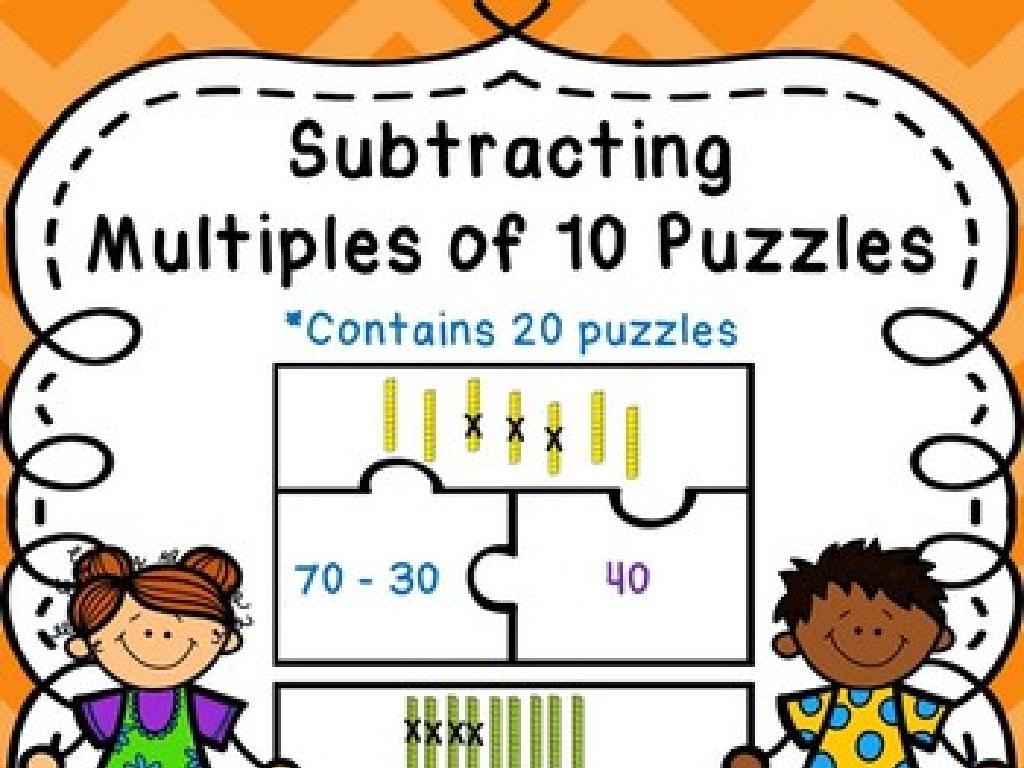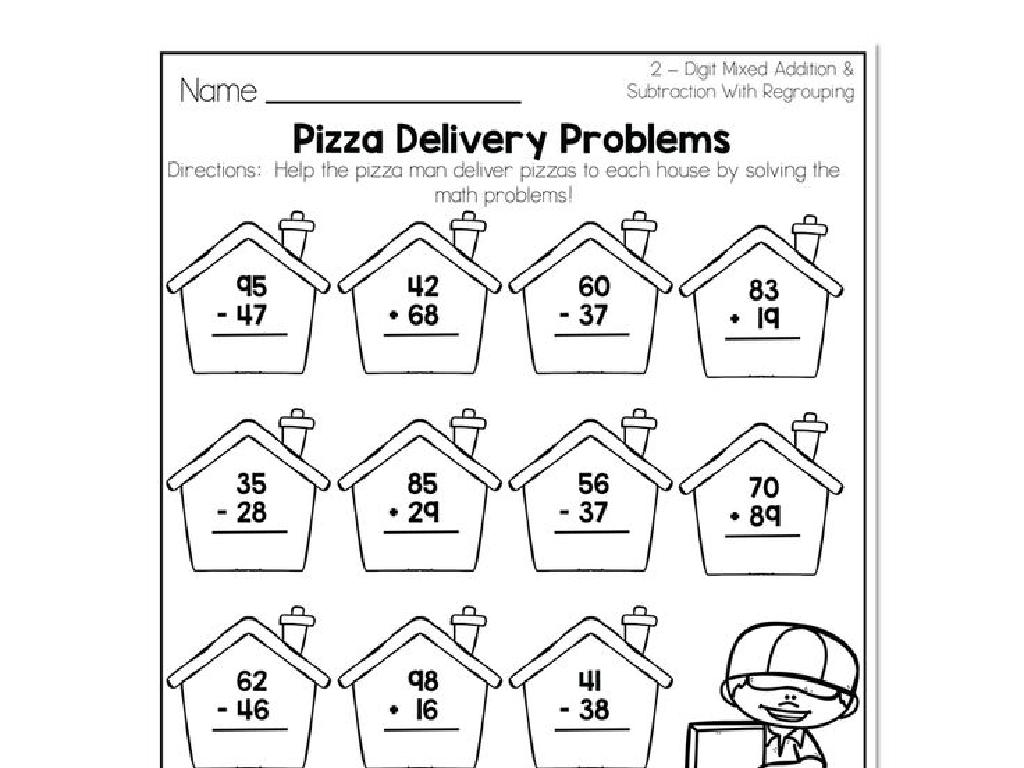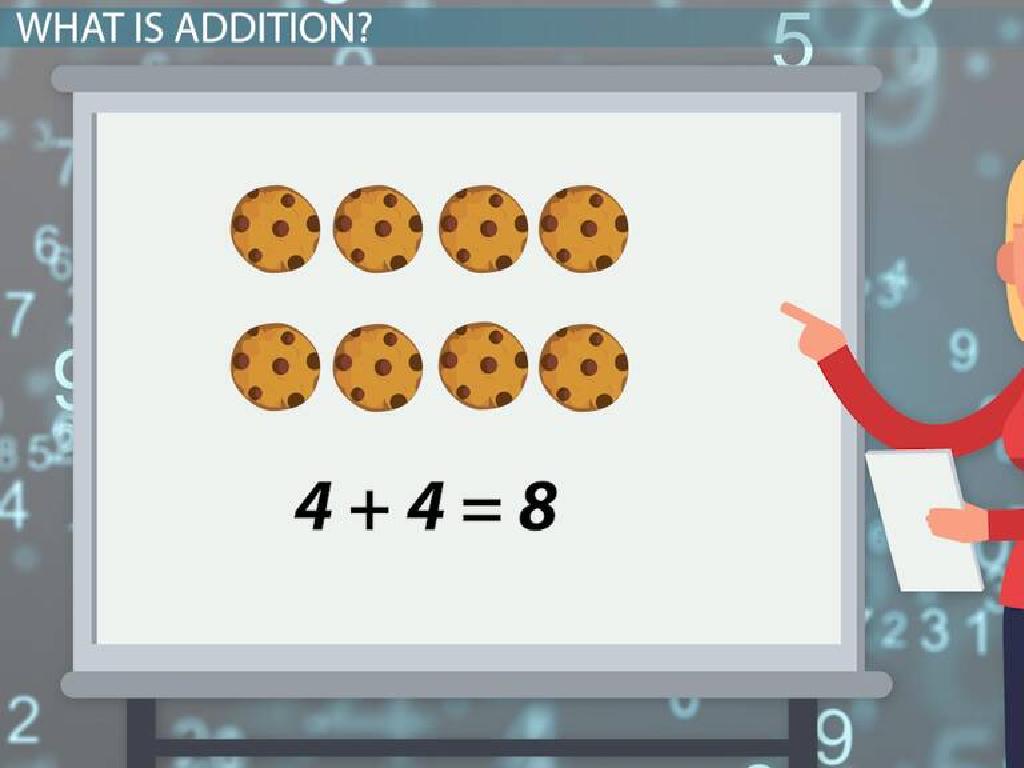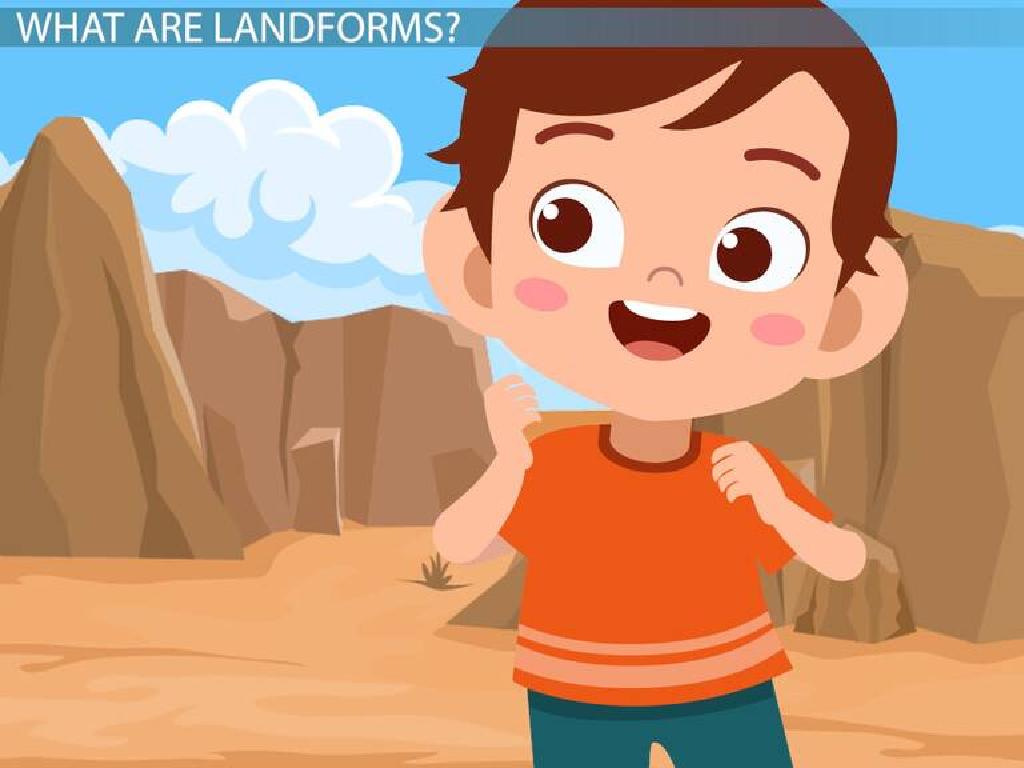Make Halves, Thirds, And Fourths
Subject: Math
Grade: Third grade
Topic: Understand Fractions
Please LOG IN to download the presentation. Access is available to registered users only.
View More Content
Welcome to Fractions: Halves, Thirds, and Fourths
– What fractions represent
– Fractions show parts of a whole, like a pizza cut into pieces.
– Halves, thirds, and fourths basics
– Halves: 1/2, Thirds: 1/3, Fourths: 1/4. Imagine dividing a cookie into equal parts.
– Fractions are everywhere
– Use fractions when sharing snacks or dividing chores.
– Practice with real objects
– Let’s cut shapes into halves, thirds, and fourths to see fractions in action!
|
This slide introduces the concept of fractions to third graders, focusing on halves, thirds, and fourths. Begin by explaining that fractions represent parts of a whole, using relatable examples like a pizza or a cookie. Emphasize that each part must be equal for it to be a fraction. Show how fractions are used in everyday life, such as sharing food or dividing tasks equally among friends. Encourage hands-on practice by having students cut paper shapes or use other classroom materials to create visual and tangible representations of fractions. This will help them understand and remember the concept of fractions more effectively.
Understanding Wholes and Fractions
– What is a whole?
– An undivided item or quantity
– Examples of whole objects
– A pizza before it’s sliced, an uncut cake
– Recognizing a whole
– To understand fractions, start with the whole
– Why wholes are important for fractions
– Knowing the whole helps divide it into equal parts
|
This slide introduces the concept of a whole as the starting point for understanding fractions. A whole can be any object or quantity that is complete and undivided. Provide tangible examples like a whole pizza or an uncut cake to help students visualize what a whole looks like. Emphasize the importance of recognizing the whole before dividing it into fractions, as this understanding is crucial for grasping how parts make up a whole. Encourage students to think of other examples of wholes in their daily lives and discuss why it’s necessary to know the whole before learning to make halves, thirds, and fourths.
Making Halves in Fractions
– Understanding halves
– Halves means one of two equal parts of a whole
– Dividing into 2 equal parts
– Imagine splitting a sandwich evenly for 2 friends
– Each equal part is a half
– When we say ‘a half’, we mean 1 out of the 2 equal parts
– Example: Cutting an apple
– Think of slicing an apple into 2 pieces so each is the same size
|
This slide introduces the concept of halves, which is a foundational idea in understanding fractions. Emphasize that when we make halves, we are dividing something into two parts that are exactly the same size. Use tangible examples like cutting an apple or sharing a sandwich to illustrate the point. Encourage students to think of other examples where they might divide things into halves in their daily lives. This will help them relate the mathematical concept to real-world situations, making it more understandable and memorable.
Making Thirds in Fractions
– What are thirds?
– Thirds mean 3 equal parts of a whole
– Each part is one third
– Dividing objects into thirds
– Imagine cutting a pizza into 3 slices
– Real-life example: sandwiches
– Like sharing a sandwich equally with 2 friends
|
This slide introduces the concept of thirds in the context of fractions. Begin by explaining that when we make thirds, we are dividing something into three equal parts. Each of these parts is called a third. Use tangible examples like cutting a sandwich or a pizza to help students visualize the division into thirds. Emphasize that each part must be equal in size to be considered a third. Encourage students to think of other items they could divide into thirds and discuss why it’s important for the parts to be equal. This will help them understand the concept of fairness and equality in sharing, which is a practical application of understanding fractions.
Making Fourths in Fractions
– Fourths divide into 4 equal parts
– Each part is a fourth or quarter
– Example: A cookie in 4 pieces
– If you cut a cookie so it has 4 equal pieces, each piece is a fourth
– Fourths are like sharing evenly
– Imagine sharing a pizza with 3 friends so everyone gets the same amount
|
This slide introduces the concept of ‘fourths’ or ‘quarters’ as a fundamental part of understanding fractions. Emphasize that dividing something into four equal parts means each part is a fourth. Use tangible examples like splitting a cookie or a pizza, which are relatable to third graders, to illustrate the concept. Encourage students to think of other items they could divide into fourths to reinforce the idea of equal shares. The goal is for students to visualize and understand that a fourth is one of four equal parts of a whole. During the lesson, consider bringing in actual objects that can be divided into fourths to provide a hands-on experience.
Fractions in Action: Exploring Halves, Thirds, and Fourths
– Visualizing fractions with shapes
– See how a circle can be divided into 2, 3, or 4 equal parts
– Fractions represent equal parts
– One half means 1 out of 2 equal parts of a whole
– Using ‘halves’, ‘thirds’, ‘fourths’
– Learn to say ‘one half’, ‘one third’, ‘one fourth’
– Practice with everyday objects
– Find items like pizza or pie to cut into fractions
|
This slide introduces students to the concept of fractions by visualizing them with shapes and everyday objects. Emphasize that fractions are equal parts of a whole, and use real-life examples like cutting a pizza or a pie to make the idea tangible. Encourage students to use fraction language such as ‘halves’, ‘thirds’, and ‘fourths’ to describe parts of a whole. Incorporate activities where students can practice dividing different shapes and objects to reinforce the concept. The goal is to build a strong foundation in understanding and using fractions in various contexts.
Class Activity: Fraction Fun with Pizzas!
– Create your own paper pizza
– Cut and color for fractions
– Use scissors and colors to divide your pizza into equal parts
– Show halves, thirds, and fourths
– Make sure to represent halves (2 equal parts), thirds (3 equal parts), and fourths (4 equal parts)
– Share and explain your pizza
|
This activity is designed to help students visualize and understand fractions in a fun and interactive way. Provide each student with a circle of paper that represents a pizza. They will use scissors to cut the pizza into halves, thirds, and fourths, and then use colors to differentiate the sections. Once completed, each student will present their pizza to the class, explaining how they divided it into fractions. This will reinforce their understanding of equal parts and the concept of halves, thirds, and fourths. For the teacher: Prepare different colored papers, scissors, and a sample paper pizza. Guide the students through the process, ensuring they understand how to divide the pizza into equal parts. Have a discussion about real-life examples of fractions, such as slicing actual pizzas or pies. Possible variations of the activity could include using playdough or drawing the pizzas instead of cutting paper.
Fraction Review: Halves, Thirds, and Fourths
– Recap today’s fraction lesson
– We learned to make halves, thirds, and fourths.
– Identify fractions around us
– Look around! Can you spot any fractions in the classroom?
– Class Q&A session
– Understanding with examples
– Let’s use objects like pizza or pie to visualize fractions.
|
This slide aims to consolidate the day’s learning about fractions. Start by asking the students to summarize what they’ve learned about making halves, thirds, and fourths. Encourage them to look around the classroom and find real-life examples of fractions, such as a clock (halves and fourths) or a divided whiteboard (thirds). Proceed with a Q&A session to address any uncertainties and reinforce their understanding. Use tangible examples like slices of pizza or pie to help them visualize and better grasp the concept of fractions. This interactive review will help solidify their learning and prepare them for more complex fraction topics.






